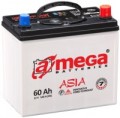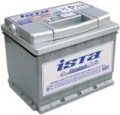—
Serviceable. Only classic lead-acid batteries (see "Type") are serviceable: they can be easily identified even externally by the presence of removable caps that provide access to the internal compartments with electrolyte. The latter is a mixture of sulfuric acid and water, and with each charge, some of this water "boils off" (breaks down into oxygen and hydrogen and evaporates). This occurs especially intensively during overcharging or charging at increased voltage. Battery maintenance consists of periodically replenishing the water supply in the electrolyte—without this, the decrease in its level leads to plate damage due to contact with air, which irreparably worsens the battery's characteristics. On average, maintenance needs to be carried out 1-2 times a year (15-20 thousand km mileage for a passenger car), and these periods usually coincide with scheduled maintenance. However, this value may vary depending on the characteristics of both the battery itself and its operation; more detailed information is usually contained in the instructions for specific models. "Refilling" should be done exclusively with distilled water, as even relatively small amounts of foreign impurities can damage the plates.
—
Maintenance-free. As the name suggests, such batteries do not require the maintenance described above; this is achieved by several methods, in particular by filling the electrolyte with a reserve f
...or the entire service life or using gel (see "Type"). Despite the obvious advantages due to ease of use, maintenance-free batteries have one drawback: they are much more sensitive to deep discharge (capacity decreases), and, accordingly, they are less tolerant of cold and long downtimes.The form factor describes the general design features of the battery, primarily the way the terminals are installed and their dimensions, as well as the dimensions of the battery itself.
—
European. A distinctive feature of European batteries are the terminals, somewhat recessed into the case. Due to this, this form factor is considered safer than the Asian form factor — the risk of a short circuit is lower when the battery falls on a conductive surface or when a metal object hits it. In addition, the terminals themselves are usually made in the form of Euro cones (see below for more details). As for the dimensions, European batteries have more depth and less height than Asian ones. As the name implies, this form factor is found in cars of European manufacturers, mainly passenger cars.
—
Asian. Asian batteries are easy to identify by the terminals protruding from the top of the case; also, these terminals can be noticeably thinner than European ones, because. many models use JAP cones (although not all). If compared in size, then the "Asians" are taller and thinner than the "Europeans" (more precisely, they have less depth). This option is popular with Japanese and Korean automakers, and is also quite widespread among trucks.
— American. A rather rare form factor on our roads — due to the fact that cars from American manufacturers are most often delivered to us in the form
...of modifications adapted to Europe or Asia; original versions are rare. Lightweight batteries of this form factor have "USA" screw terminals (see "Terminals"), located not on the cover, but on the front wall of the case. At the same time, both “purely American” and combined batteries are produced, which, in addition to a pair of USA terminals on the front wall, also have contacts on the cover that are more familiar to east european drivers. And in cargo batteries of this form factor, the terminals are usually installed on the cover, in the left side location.
When choosing a battery, it makes sense to clarify which form factor is optimal for your car: a discrepancy in this parameter can cause compatibility problems up to the complete impossibility of installing a battery.Has
a charge indicator on the battery.
Such an indicator displays the current charge level and allows you to generally assess the state of the battery literally at a glance, without additional actions and diagnostic equipment. In some models of serviceable batteries, the indicator can signal not only the need for charging, but also the need to add water to the electrolyte (for more details, see "Maintenance").

